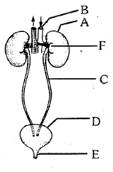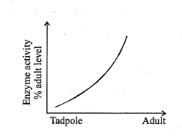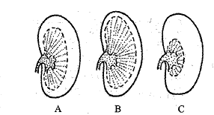MEDIUM
NEET
IMPORTANT
Earn 100
Which of nitrogenous waste eliminated through saliva is
(a)Urea
(b)Creatinine
(c)
(d)Uric acid
50% studentsanswered this correctly

Important Questions on Excretory Products and Their Elimination
MEDIUM
NEET
IMPORTANT
Which of the following condition arises due to kidney failure?
MEDIUM
NEET
IMPORTANT
In the diagram of excretory system of human beings given below, different parts have been indicated by alphabets, choose the answer in which these alphabets have been correctly matched with the parts which they represent -

MEDIUM
NEET
IMPORTANT
Medial surface of kidney are ______ while lateral
surface is ______ :-
MEDIUM
NEET
IMPORTANT
How many of the following chordates have flame cells as excretory organ. Planaria, Ascaris, Amphioxus, Tapeworm, Nereis, Scoliodon.
MEDIUM
NEET
IMPORTANT
Read statements and select the alphabet(s) for which the statement is correct.
| (A) | When some one drinks lot of water, ADH release is decreased. |
| (B) | Exposure to cold temperature suppress ADH release |
| (C) | Caffeine in Tea and coffee increase sodium absorption from DCT and collecting ducts |
| (D) | ADH also cause vasodilation |
MEDIUM
NEET
IMPORTANT
Graph depicts the concentration of enzymes involved in urea synthesis in a developing tadpole. It indicates a transition from

MEDIUM
NEET
IMPORTANT
The diagrams show vertical sections of kidneys of coypu, brown rate and kangaroo rat, showing the relative size of cortex and medulla. Coypu are found in freshwater and never short of water to drink. Brown rats are able to go some days without drinking at all. Which kidney belongs to which animal?

MEDIUM
NEET
IMPORTANT
Suppose you are developing a new drug, and have found that when it is administered in humans there is a substantial increase in the volume of urine produced. When you administer antidiuretic hormone (ADH or vasopressin) at the same time, the volume of urine returns to normal. Which hypothesis best fits these observations? The new drug?
